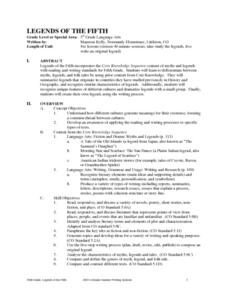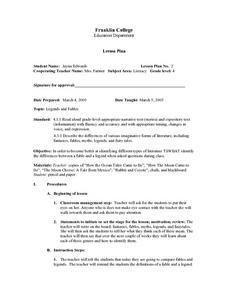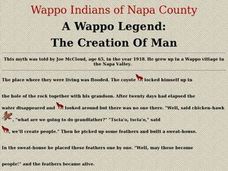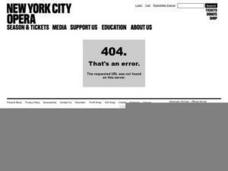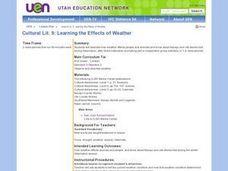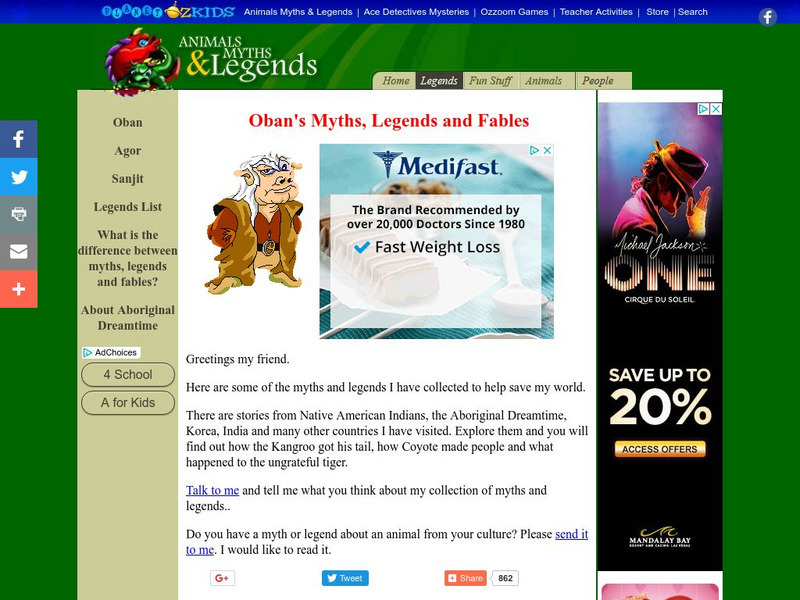University of Arizona
Yoruba Legends: Southern Nigeria
Explore legends and storytelling with your learners. After listening to some legends, pupils work collaboratively and then individually to come up with original legends about animals.
Curated OER
Let's Look at Legends: Oregon quarter reverse
Analyzing historical legends is a fun way to develop critical-thinking skills. Pupils will use a graphic organizer to compare and contrast two historical legends relating to volcanoes. While this lesson focuses on the image of Crater...
Curated OER
Trickster Tale Comics: The Cunning Coyote
The trickster tale "The Coyote Places the Stars" tells how a coyote is sneaky but helpful. After listening to the tale, scholars use their imagination to create a trickster tale about a coyote, displaying their journey through a comic...
Curated OER
Legends of the Fifth
Fifth graders discover the difference between myths, legends, and folk tales. They summarize legends. They work together to dramatize legends and then create their own legend using the writing process. Handouts and worksheets are included.
Curated OER
Legends and Fables
Fourth graders identify and discuss the differences between legends and fables. They define fable and legend, then as a class take turns reading our books. Students select two of the stories, and complete a Venn diagram, comparing one...
Curated OER
Crater Creation
After looking at the back of a quarter featuring Oregon terrain, learners distinguish between fiction and non-fiction and identify the beginning, middle and end of a story. First, they listen to legends that describe the creation of...
Curated OER
Crater Creation
Young scholars examine the Oregon state quarter and discuss how Crater Lake was formed-geologically and according to Native American legend. They practice making predictions and identifying the beginning, middle, and end of a story.
Curated OER
Kissing Coyotes
Fourth graders are read the book "Kissing Coyotes". During the story, they make predictions about what they believe might happen next. After the story, they create their own story using their imagination and draw illustrations.
Curated OER
A Wappo Legend: The Creation of Man
Third graders read a Wappo creation myth observing the use of symbols or pictures for characters in the story. After discussing the myth, they write their own stories, using pictures for some of the words. They research other creation...
Curated OER
Multicultural Sun, Moon, and Star Activities
Students research the multicultural stories and artistic representations of the Sun, Moon, and stars. In this multicultural space lesson, students discuss the symbols and stories for the sun in various cultures. Students construct a...
Curated OER
Transforming Anansi Folktales Into Storyboards
Students work in small groups to illustrate a story board of a folktale. They develop the meaning of a trickster as a humor device in folktales by listening to several about Leprechauns and the Coyote of Native American tales. They then...
Curated OER
Identifying Seasonal Animal Behaviors
Students discuss seasonal behavior of different animals. They participate in group activities and identify animals. They also examine the changes in seasons and how animals act differently in different seasons.
Curated OER
Learning the Effects of Weather
Second graders examine how weather affects animals and people. They discuss Navajo and Ute stories told during different seasons of the year, and create a drawing of people or animal behavior and the connection to the weather.
Other
Legends
Looking for fun and entertaining legends to read to your students? Try this site and explore the easy to read online stories. `
ReadWriteThink
Read Write Think: Using Picture Books to Teach Plot Development and Confict Res.
Students read picture books to explore the concepts of plot development and conflict resolution. They first learn about the connections between reading and writing, and then revise their own writing. CCSS.ELA-Literacy.CCRA.R.4





